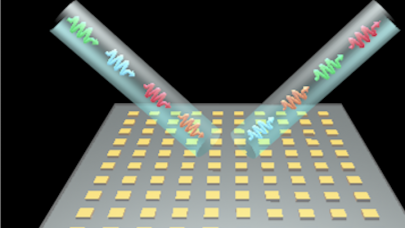May 24, 2023 — The fourth most common neurological disorder in the world is epilepsy, according to the Epilepsy Foundation. Individuals who have the disorder experience surges of electrical activity in their brains that can cause recurring seizures. At the base of those electrical signals is a protein called the ionotropic glutamate receptor (iGluR). Problems with this protein cause the seizures, as well as degeneration of nerve cells.
 According to Maria Kurnikova from Carnegie Mellon University, when the glutamate receptor “is a little bit too excitable, when it stays open too long, it immediately goes to disorders of the brain.” She would know – she worked with her graduate students and Electrophysiologist Alexander Sobolevsky, an iGluR structure pioneer at Columbia University, to thoroughly examine the motions of iGluR when glutamate attaches to it.
According to Maria Kurnikova from Carnegie Mellon University, when the glutamate receptor “is a little bit too excitable, when it stays open too long, it immediately goes to disorders of the brain.” She would know – she worked with her graduate students and Electrophysiologist Alexander Sobolevsky, an iGluR structure pioneer at Columbia University, to thoroughly examine the motions of iGluR when glutamate attaches to it.
Running molecular dynamic (MD) simulations – among the most complex that Kurnikova’s team had attempted – on Anton 2 and repeating computations using Bridges-2’s powerful GPUs, the scientists found a mixture of kinks with various numbers of glutamate bound. An analysis of the MD data using machine learning artificial intelligence helped tease apart these complex states.

The scientists anticipate additional work to clarify the activity of the glutamate-bound iGluR. But for now, they have shed light on how this important but complicated protein works. It’s the first step in designing new drugs to affect the receptor, giving doctors new options for helping people with problems in this life-critical protein.
“There’s one single FDA-approved drug to inhibit [these] receptors – perampanel,” explained Kurnikova. “But no one knew how it worked on the channel … We produced an enormous amount of simulation data using Anton and [Bridges-2] … It was a difficult problem to simulate the [current] fluctuations, [a] small signal in really noisy data.”
Click here to read more about this story.
Project Details
Institution: PSC (Pittsburgh Supercomputing Center)
University: Carnegie Mellon University
Funding Agency: This work was supported by the NIH (grant nos. U24 GM129539, U24 GM129541, R01 NS083660, R01 GM128195 and R01 AG065594, R01GM116961, R01 CA206573, R01 NS083660, R01 NS107253 and R01 AR078814). This work also was supported by the NSF (grant nos. 1818213, 1563291, ACI-1548562 and 1818086) and the Simons Foundation (grant no. SF349247).
Source: ACCESS

























































